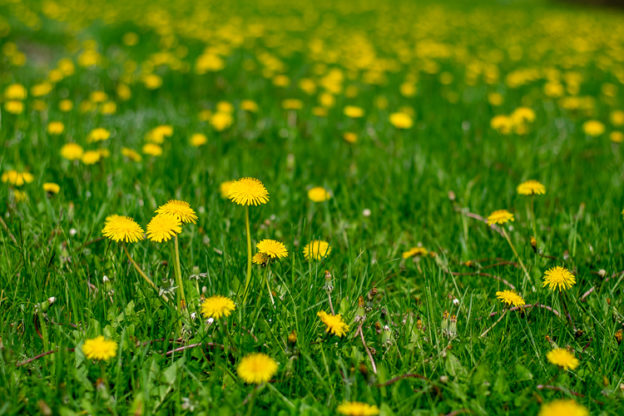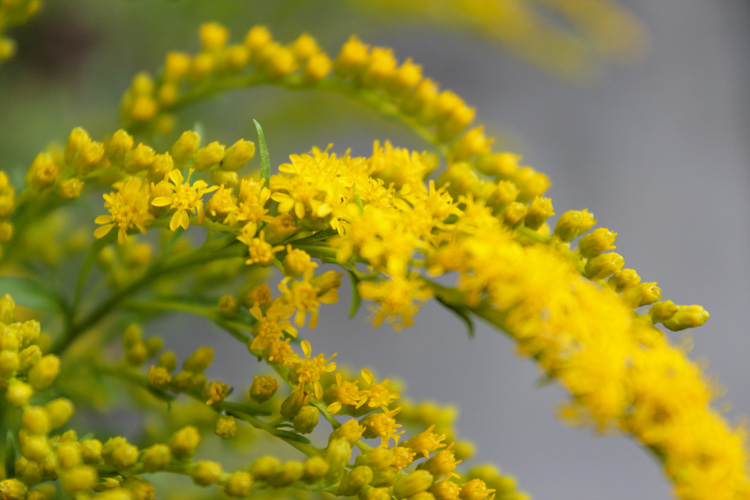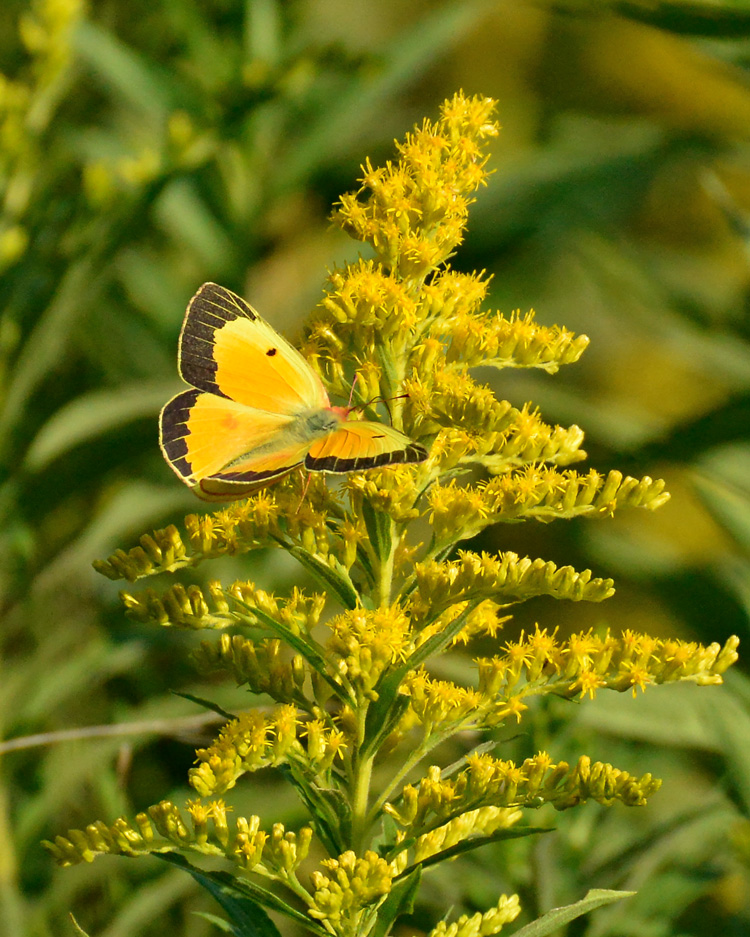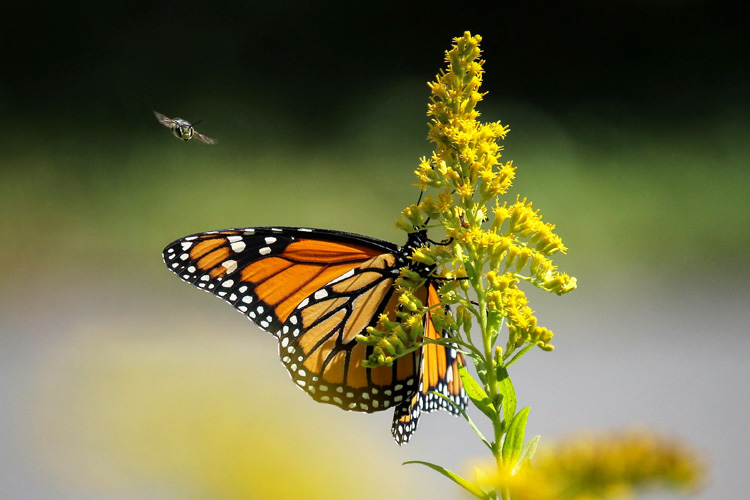Before you mow them down or, worse, reach for the herbicide, you might want to consider giving the dandelions in your yard a second chance.

How They Got Here
The ubiquitous dandelions that pop up in our yards this time of year are actually native to Europe and Asia. They were brought here by European colonists who used them for medicine, food, and wine. The English name comes from the French “dent de lion” meaning “teeth of a lion” which refers to the jagged leaves.
A Useful Weed
Many people think of them as a noxious weed but they are actually quite a useful plant. They flower earlier than most of our native plants so they offer early pollen and nectar for honeybees and native pollinators.
They are host plants for the caterpillars of several moth species including the spectacular Giant Leopard Moth. Their long tap root helps to break up the soil and move nutrients and water throughout the soil. And dandelion greens are delicious.

Go Natural
This year, help out our native pollinators and be kind to Mother Earth by forgoing any herbicides and letting dandelions do their thing. Dandelions are an important food source for honeybees and others throughout the spring and most herbicides are poisonous to these insect pollinators.







